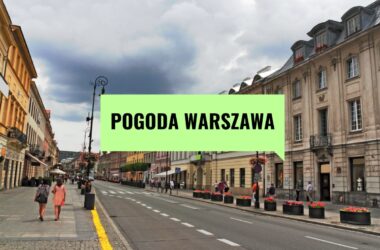The mushroom season is in full swing, and Warsaw’s outskirts offer legal, safe spots to fill your basket.
Legal Foraging Areas
The mushroom season is in full swing around Warsaw, with most state forests allowing legal foraging, except in national parks and reserves like Kabacki Forest and Kampinoski National Park.
Near the city center, Mazowiecki Landscape Park’s pine forests (from Stara Miłosna to Zielony Ług, towards Celestynów and Otwock) are ideal for picking borowiki, maślaki, kurki, and koźlarze. However, collecting is prohibited in reserves like “Na Torfach” and “Żurawinowe Bagno.”
To the north, forests near Jabłonna, Chotomów, Wieliszew, and Nieporęt (“Lasy Chotomowskie” and “Lasy Nieporęckie”) are good options, along with Puszcza Biała, Puszcza Bolimowska, and Puszcza Stromiecka, as well as areas along the Narew and Zegrzyński Reservoir.
To the southwest, Młochowski Forest and Chojnowski Landscape Park (near Zalesie Górne and Ustanów) allow foraging, except in reserves.
Restricted Areas
Foraging is strictly prohibited in Kampinoski National Park, Kabacki Forest, Bielański Forest, and Łosiowe Błota, with fines up to 500 zł for violations. Additionally, young plantations (under 4m), seed stands, experimental plots, and wildlife sanctuaries are off-limits.
Mushroom Species and Habitats
In Mazovian pine forests, look for brown podgrzybki and maślaki, while koźlarze (babka and red) thrive at the edges of birch groves. Borowik szlachetny grows near oak and beech, while kurki form clusters on sandy, acidic soils. Czubajka kania is found on clearings and forest edges.
Only collect species you can confidently identify, leaving young or overripe specimens in the forest.
Foraging Techniques and Equipment
Use a knife and a breathable basket—avoid plastic bags, which speed up spoilage. Gently twist or cut mushrooms at the base, ensuring the mycelium remains undamaged and covering the hole with litter.
For blaszkowe (gilled) mushrooms, twisting helps identify key features. Clean and process mushrooms promptly after returning.
Legal Guidelines
In Poland, free foraging is allowed in state forests, except in national parks, reserves, military zones, young plantations (under 4m), seed stands, and experimental plots. In landscape parks, foraging is permitted outside reserves. Private land requires owner permission.
Fines apply for foraging in restricted zones or protected areas.
Safety and Verification
If in doubt, leave the mushroom. Foresters and sanitary inspectors conduct educational campaigns, while mushroom experts evaluate collections at exhibitions and events.
In Warsaw and the region, initiatives like WSSE’s “Know Mushrooms – Avoid Poisoning” exhibition and Sanepid’s training programs help prevent toxic misidentifications.
Tips for a Safe Foray
Walk a few hundred meters into the forest, away from parking lots and popular paths. Bring a charged phone, water, insect repellent, and a reflective item.
Even without a full basket, such walks offer mental clarity—one of autumn’s greatest rewards.
Key Reminders Before Heading to the Forest
Go only where foraging is allowed (state forests, landscape parks outside reserves). Avoid Kampinoski National Park and reserves like Kabacki Forest and Bielański Forest. Use a basket and knife, avoid plastic bags, and only collect what you can confidently identify. Consult experts if unsure. Respect nature: don’t damage fruiting bodies, disturb litter, and take your trash.










